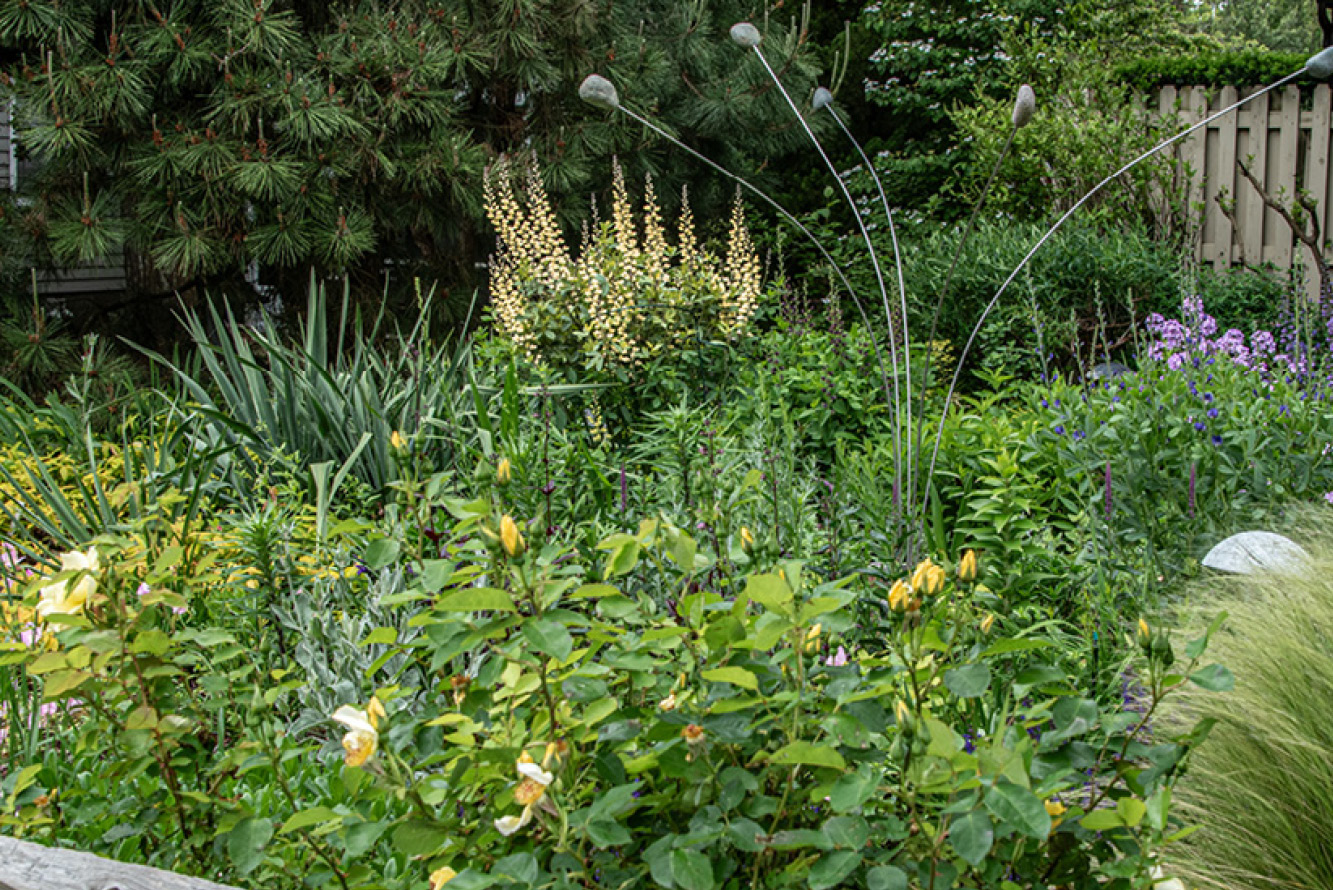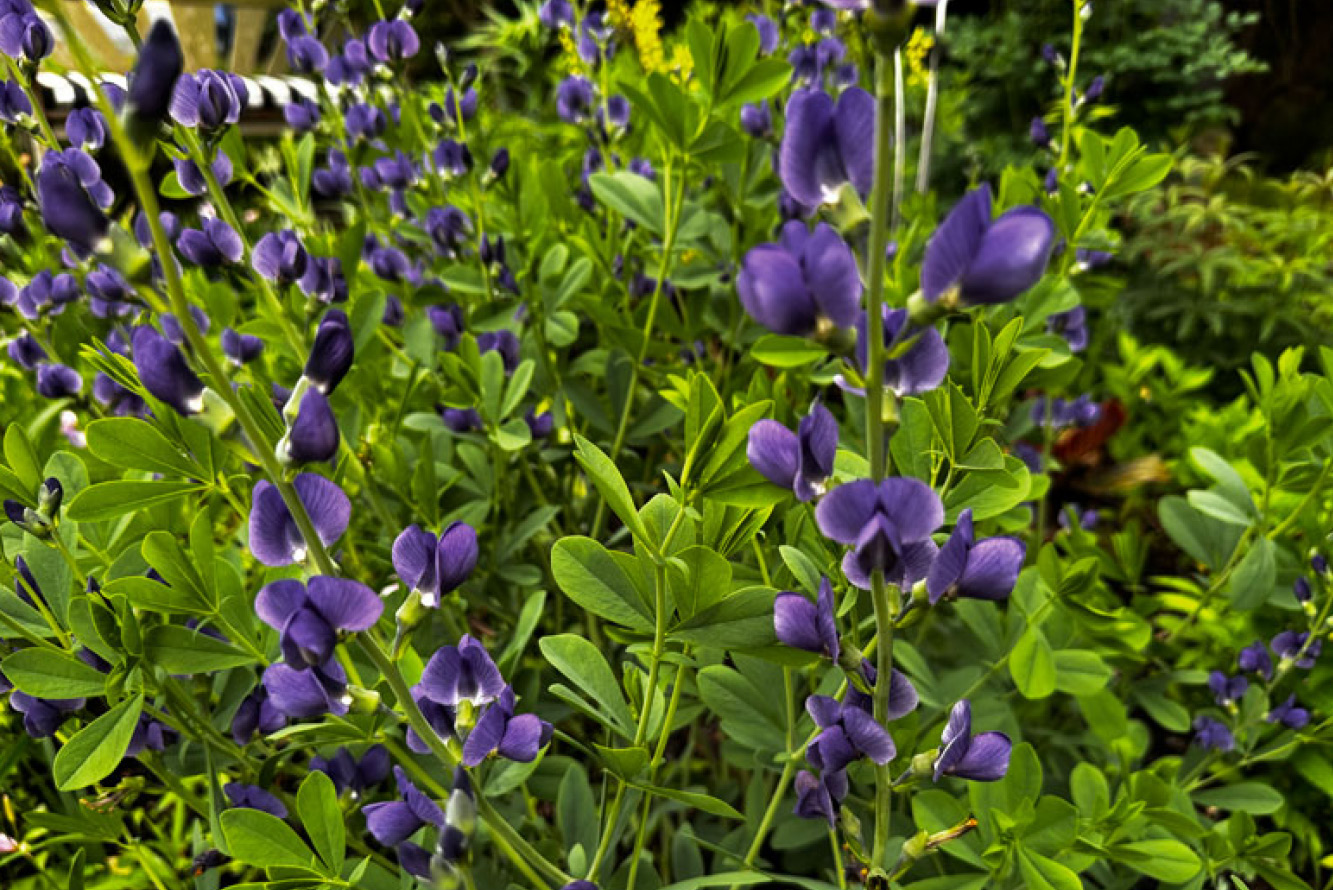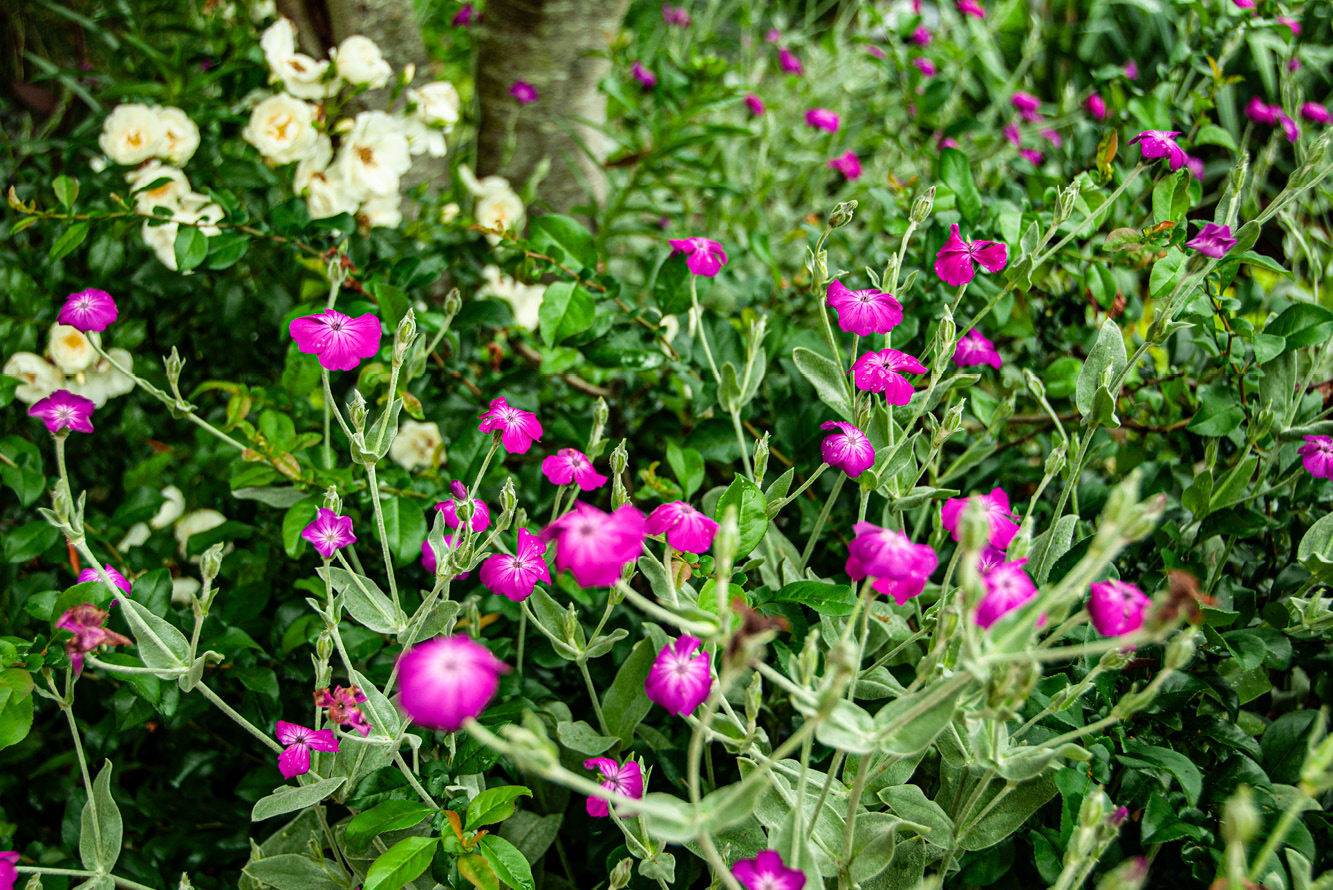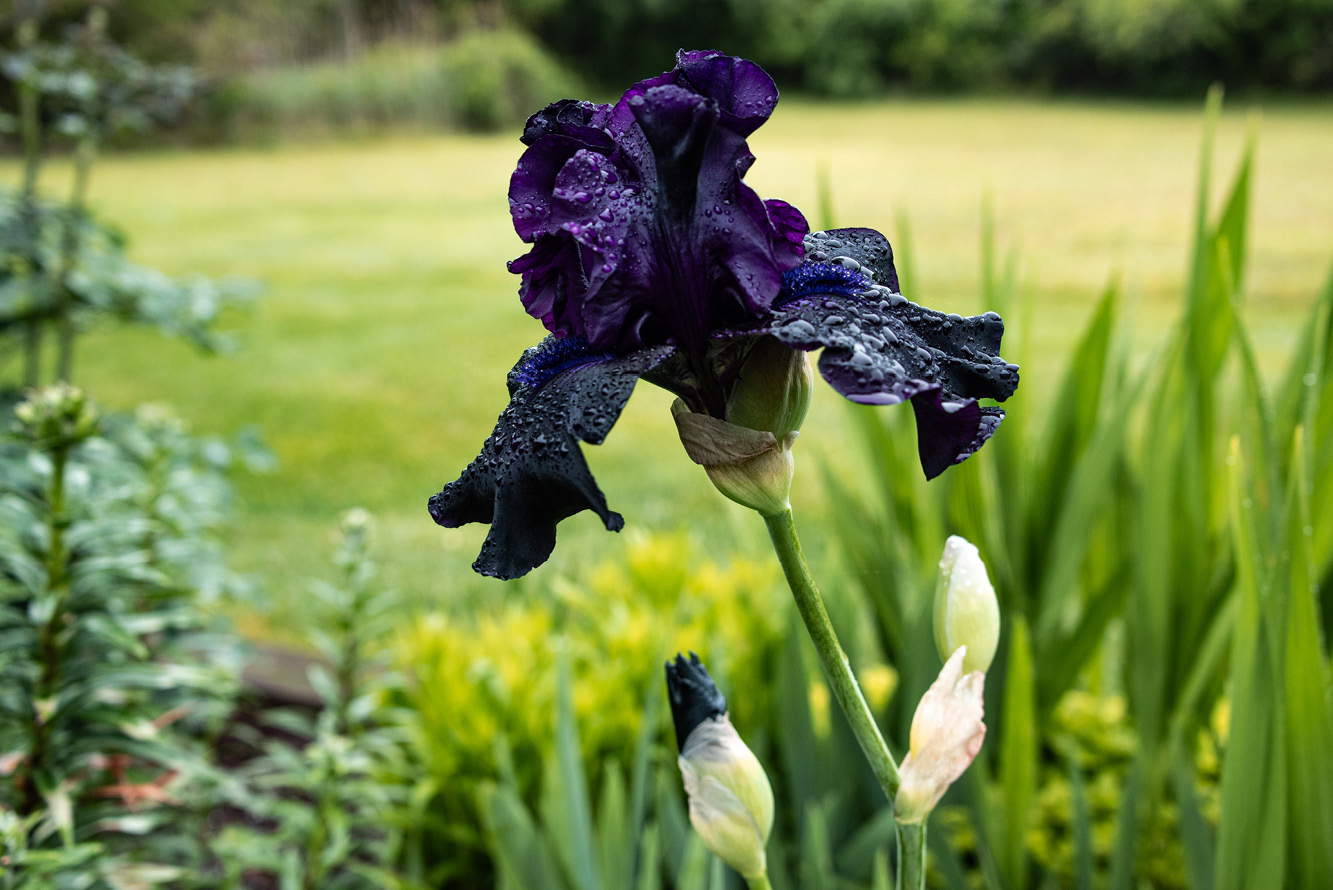The verdant shades of new growth in spring always promise a bountiful growing season in my Mid-Atlantic American garden (Zone 7b). Spring inspires the “visions of sugar plums” kind of fantasy; gardeners imagine vibrant colors, beautiful arrangements, succulent fruits and vegetables, and tasty herbs that we will enjoy and share into early fall.
Mother Nature Sometimes Challenges Gardeners
Unfortunately, Mother Nature throws curve balls as summer comes along. Scorching heat, legions of insects, and mysterious diseases ravage leaves, stems, flowers, and edibles, sending this gardener into a frenzy to find responsible, organic treatments to remedy problems.
And let’s not forget the ravenous deer and rabbits that infest some areas. Deer consider the tender, succulent buds of perennials and annuals a buffet of tasty snacks. Their feast the night before will break your heart the next morning when you discover all your favorite lily buds, just on the verge of opening for their spectacular annual display, neatly bitten off. I speak from experience. (If you suffer from these voracious four-footed pests, try organic Deer Defeat. It absolutely works, though it smells atrocious. You can order the product online in a spray bottle.)

Let’s get back to spring, when hope still springs eternal for the gardener. I consider my garden a dynamic work of art that’s never really finished, since it constantly morphs into a new iteration of itself each year. I personally enjoy redesigning parts of the garden to try new ideas, working the soil and marveling at the emergence of old favorites alongside newly planted companions.
Yet, I also experience a dopamine rush from the oohs and aahs of admirers who pass the garden riding their bicycles or walking their pooches. This year, three plants––Baptisia, rose campion, and bearded black iris––garnered a lot of attention. The first two are largely pest- and disease-free; attention to the last plant throughout the growing season will keep problems at bay. If your growing conditions permit, I recommend all of them for your garden as well.
Baptisia presides in the garden
The queen of the spring garden, the elegant, hardy, long-lived Baptisia australis excites visitors with its stately four-foot floral show. Native to North America, the name Baptisia name doesn’t refer to a religious ritual; it’s derived from the Greek word bapto, which means “to dye.” American settlers used this native plant as an inferior substitute for the real stuff; hence, its common name, false indigo.
Baptisias display pea-like blooms on 15-inch spires over three-foot foliage that remains attractive and unblemished into fall. Eventually black pods appear later in the season. In the fall, I crack them open and scatter the seeds around to encourage new seedlings the following year.
They come in several exquisite shades. I have four Baptisias in my garden: two yellow varieties—one early-blooming pale yellow; the other, a buttery hue; a deep blue cultivar that opened two weeks ago, and a lighter blue following shortly. I’m on the hunt for a white variety that will bloom next year.

Baptisias are easy to grow, reaching three-to-four feet tall and wide. Hardy in Zones 3-9, they like full sun or part-shade in well-drained soil and need no staking, unless it’s in a shady spot. Apparently, these pest-free, deer resistant, (yay!) legumes practically live forever.
They hate to be moved. I tried to move a three-year-old seedling this spring to give to a neighbor, and after digging down 15 inches, I could not find the end of its taproot. The plant has found its permanent, albeit inconveniently situated, garden home. Note to self: transplant new seedlings before their third year.
Magenta Explosions of Rose Campion Brighten the Late Spring Garden
Nothing beats rose campion’s attractive, whitish, hairy two-foot (or taller) stems growing from a rosette of leaves and topped with single, bright magenta flowers in late spring. The plant also comes in pale pink and white, though the latter didn’t survive this past harsh winter. Termed “evergray,” their greenish-gray rosette foliage mostly remains throughout the cold months.
I learned decades ago to call them Lychnis, only to find out recently that botanical taxonomists now classify them as Silene. That’s why I’m sticking with their common name, rose campion.
A biennial or short-lived perennial native to Eurasia, rose campion thrives in full sun in a well-drained part of the garden, even tolerating poor, dry soil. Never fear losing them, though, since they reseed freely. Unfortunately, that trait earns the plant the unfair label “invasive.” It’s so easy to weed out their offspring. Instead, I take advantage of their fertile nature by transplanting small seedlings to other sunny parts of the garden or giving them away. And deer hate their fuzzy foliage (yay again!); pests and diseases don’t bother them either.
Rose campions in full bloom resemble a constellation of magenta explosions suspended a few feet above the ground. Hundreds of blooms give the garden another colorful dimension. Bonus: hummingbirds and bees eagerly gather nectar from them.

Black Bearded Iris Strikes a Dramatic Pose
Now here’s a stunner! A bearded iris (iris x germanica) so deep, deep purple, it’s almost black. Black iris is a showstopper in my garden, amidst other attractive, more pedestrian irises. At 20 to 25 inches tall, the stems produce up to five to six inky flowers over a few weeks in May.

Irises require full sun to produce their stiff, sword-like foliage in a fan-shaped fashion. I appreciate iris foliage for its striking bold and upright appearance that adds interesting geometry to the garden when placed near softer-textured plants. Their fleshy rhizomes need to be placed at or near soil surface. They don’t like a lot of water; too much will rot them.
They battle a hosts of pests––aphids, caterpillars, slugs, and the leaf-disfiguring iris borers. Leaf spot, rust, and rhizome rot can infect them. I use an organic three-in-one spray (fungicide, insecticide, miticide), which includes herb oils, soap, and sulfur, throughout the garden to control plant enemies. Practice good garden housekeeping by removing plant debris on the soil around the plants and feed once or twice a year with a low nitrogen fertilizer. You’ll keep most problems under control.
If you can’t find black irises in your local garden center, dozens of garden companies online will mail you your selected cultivar. Many cultivars are “blacker” than mine; check the internet for offerings, like “Black is Black,” “Black Beauty,” and “Black Knight.” I don’t know which variety I have, as they were a gift from my neighbor.
As summer approaches, it’s still not too late to find these species; they’re all available online. If you do order any of them, let me know how they work out for you next year.

